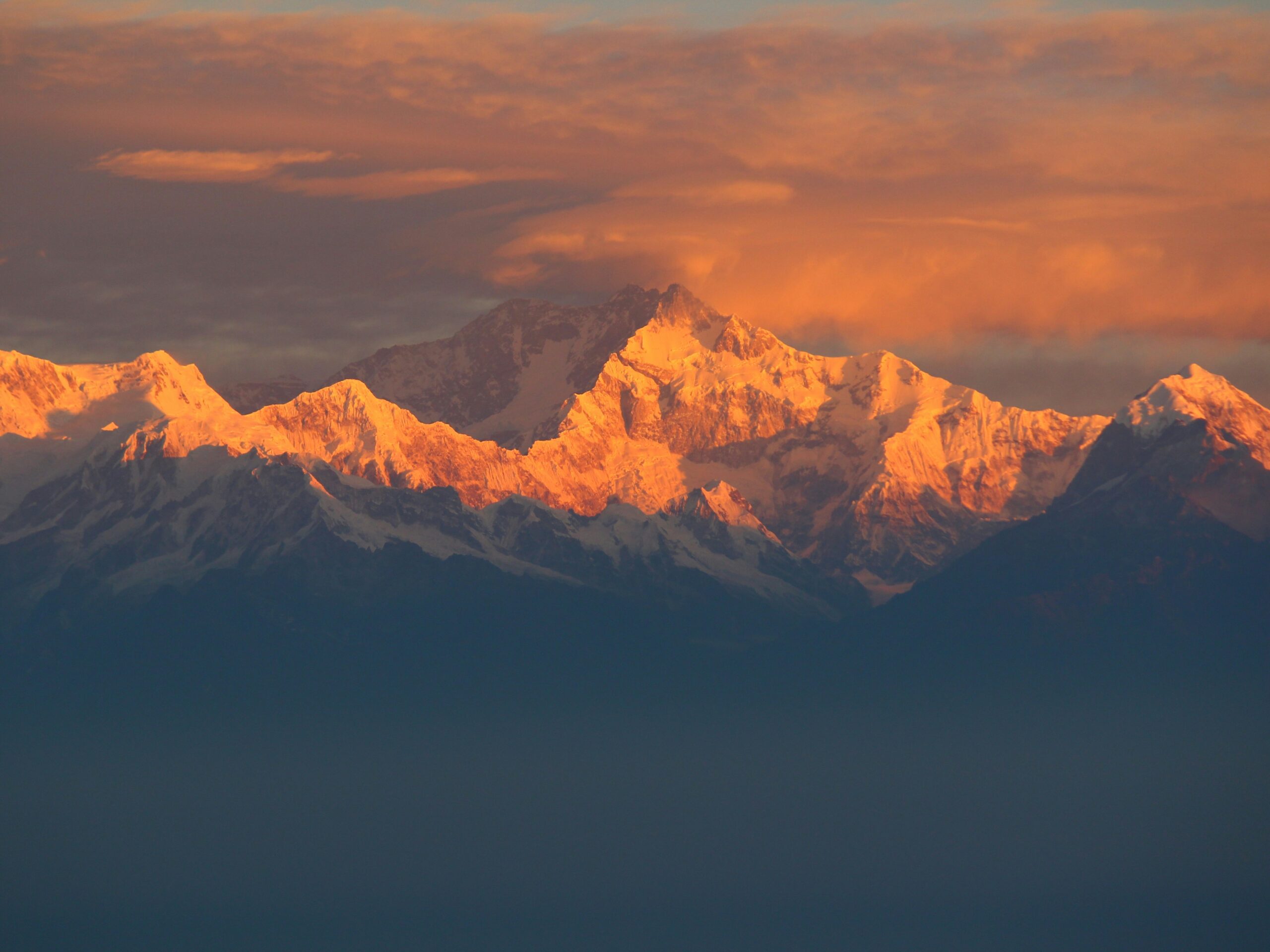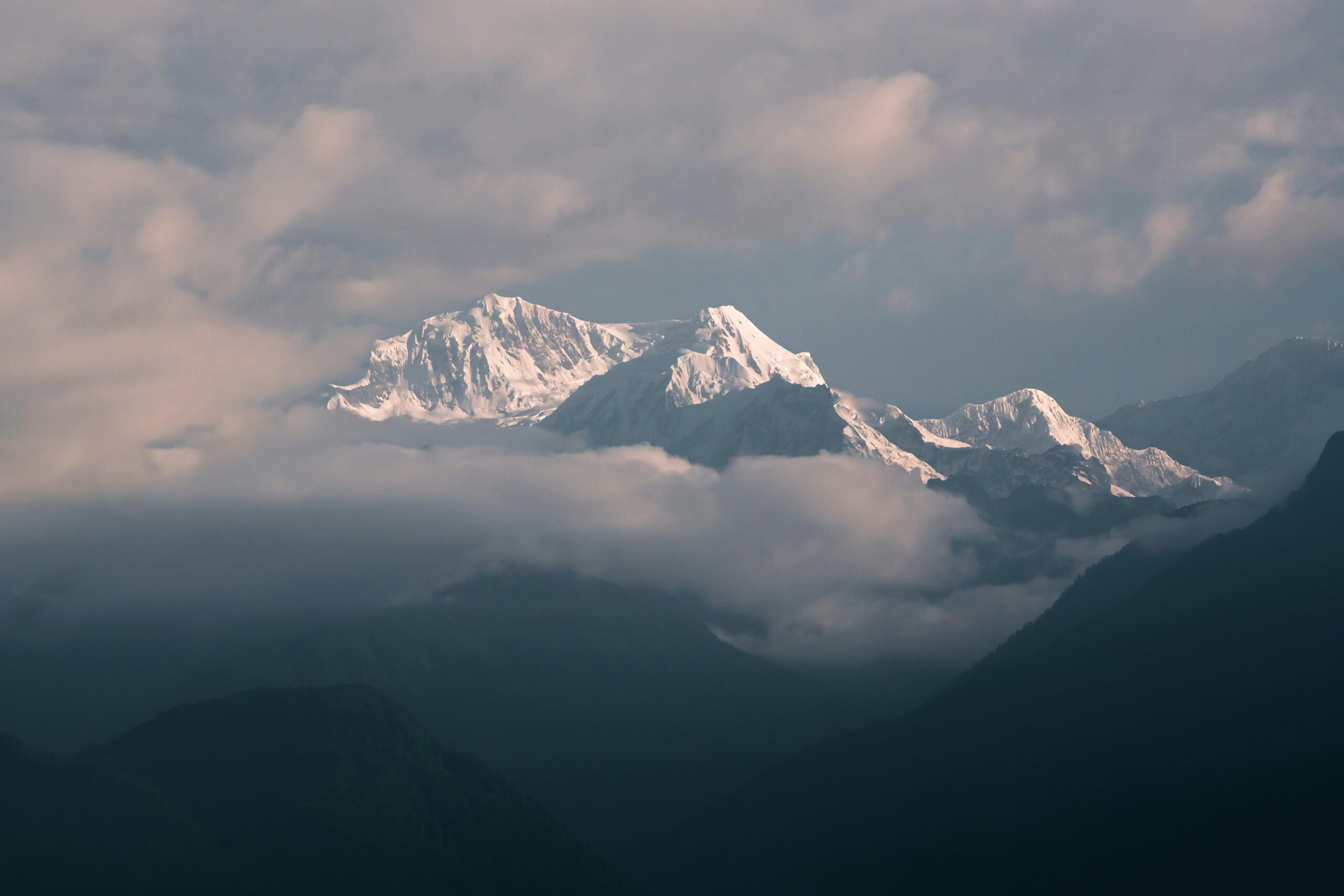Table of Content
The Himalayas highest peak in India is the mighty Kanchenjunga, a towering giant that stands as a symbol of both natural beauty and geographic significance. Located on the India-Nepal border, Kanchenjunga is the third highest mountain in the world, following Mount Everest and K2, with an elevation of 8,586 meters (28,169 feet) above sea level. For mountaineers, adventurers, and nature lovers, the Himalayas highest peak in India represents more than just a physical challenge—it holds a unique cultural, spiritual, and environmental importance.
In this exploration, we’ll dive deep into the geography of Kanchenjunga, its cultural significance, the challenges it poses to climbers, and its impact on the region’s biodiversity. Understanding why Kanchenjunga is revered as the Himalayas highest peak in India will provide a comprehensive picture of its place in both the physical and cultural landscape of the region.
Geography of Kanchenjunga
The Himalayas highest peak in India, Kanchenjunga, lies at the eastern end of the Himalayan range, straddling the border between the Indian state of Sikkim and eastern Nepal. The mountain is part of the Kangchenjunga Himal section of the Himalayas, a remote and rugged region marked by glaciers, deep valleys, and dramatic vertical cliffs. While part of the peak is within Nepal, the eastern face of the mountain resides in India, giving it the title of the Himalayas highest peak in India.
Kanchenjunga is not a single peak but consists of five prominent summits, often referred to as the “Five Treasures of Snow” by locals, symbolizing gold, silver, gems, grain, and holy books. These treasures are believed to bless the surrounding land, particularly the regions of Sikkim and eastern Nepal. The five peaks are:
- Kanchenjunga Main (8,586 meters) – The highest point and the Himalayas highest peak in India.
- Kanchenjunga West (Yalung Kang, 8,505 meters)
- Kanchenjunga Central (8,482 meters)
- Kanchenjunga South (8,494 meters)
- Kangbachen (7,903 meters)
The grandeur of Kanchenjunga’s snow-capped peaks dominates the horizon of both Sikkim and parts of Darjeeling in West Bengal. The mountain is surrounded by an array of breathtaking landscapes that include pristine forests, alpine meadows, and vast glaciated valleys.
Cultural and Spiritual Significance
Kanchenjunga, the Himalayas highest peak in India, holds immense spiritual significance for the local communities, particularly the Sikkimese people. For centuries, it has been considered a sacred mountain, deeply rooted in the religious and cultural beliefs of the people of Sikkim, Nepal, and Tibet. The mountain is revered as the abode of deities and is central to the myths and legends of the indigenous Lepcha people of Sikkim.
The name “Kanchenjunga” itself comes from Tibetan, meaning “The Five Treasures of the High Snow,” which reflects the local belief that the mountain is a guardian of wealth and blessings. According to Sikkimese traditions, the mountain is worshipped as a deity, and certain rituals and festivals are performed to honor it. The fact that Kanchenjunga is the Himalayas highest peak in India only adds to its mythic and religious importance.
Climbers are expected to respect the local customs, and for a long time, the summit of Kanchenjunga was not to be set foot upon out of respect for the sacredness of the mountain. Even today, many mountaineers halt a few meters before the actual summit, honoring the tradition of not violating the sanctity of the peak.

Climbing Challenges of the Himalayas’ Highest Peak in India
For those who dare to conquer the Himalayas highest peak in India, the journey to the summit of Kanchenjunga is both exhilarating and perilous. Climbing Kanchenjunga is considered one of the most difficult mountaineering challenges in the world, largely due to its remote location, harsh weather conditions, and treacherous terrain.
The Himalayas highest peak in India presents unique challenges compared to other major peaks like Mount Everest. Here are some factors that make Kanchenjunga a difficult and demanding climb:
- Unpredictable Weather: The weather on Kanchenjunga can change rapidly, making it one of the most dangerous peaks to climb. High winds, heavy snowfall, and freezing temperatures are common at higher altitudes, often creating life-threatening situations for climbers. The climate near the Himalayas highest peak in India is notorious for extreme cold, and summit attempts are usually limited to a narrow window in the pre-monsoon or post-monsoon seasons.
- Steep Slopes and Avalanches: The route to the summit involves navigating steep ice slopes, crevasses, and the constant risk of avalanches. The glacier-filled valleys surrounding the mountain add to the complexity, requiring expert mountaineering skills and equipment.
- Altitude Sickness: The high altitude of Kanchenjunga poses a significant risk of altitude sickness for climbers. The lack of oxygen at such extreme heights affects physical endurance, mental clarity, and overall health, making acclimatization a critical aspect of the expedition.
- Remote Location: Unlike Mount Everest, which has become a more popular and accessible destination for climbers, the Himalayas highest peak in India remains relatively isolated. The trek to base camp itself is long and arduous, passing through remote villages, forests, and steep mountain trails. This remoteness means that climbers have limited access to rescue operations and medical help in case of emergencies.
Despite these challenges, Kanchenjunga continues to draw a small but dedicated group of climbers each year. Its untamed beauty, coupled with the prestige of scaling the Himalayas highest peak in India, makes it an alluring yet daunting quest for mountaineers.
Biodiversity Around the Himalayas Highest Peak in India
The Himalayas highest peak in India is not just a geological marvel, but also a biodiversity hotspot. The region surrounding Kanchenjunga, particularly in Sikkim, is home to an astonishing variety of flora and fauna. The Kanchenjunga Conservation Area in Nepal and the Khangchendzonga National Park in Sikkim, a UNESCO World Heritage Site, work to protect the delicate ecosystems around the mountain.
Here’s a look at some of the biodiversity in the region:
- Flora: The lower slopes of the Himalayas highest peak in India are covered with dense forests of oak, pine, rhododendron, and bamboo. As the altitude increases, the landscape transitions into alpine meadows filled with rare species of flowers like blue poppies, edelweiss, and gentians. Above the tree line, hardy shrubs and mosses are the only vegetation capable of surviving in the harsh conditions.
- Fauna: The Kanchenjunga region is home to endangered species such as the red panda, snow leopard, and Himalayan black bear. Bird species like the blood pheasant, Himalayan monal, and Satyr tragopan are also found in the region. Conservation efforts focus on preserving these species and their habitats, which are threatened by climate change, deforestation, and human activity.
- Glacial Systems: The glaciers surrounding the Himalayas highest peak in India are vital to the region’s water supply. These glaciers feed into major river systems such as the Teesta and the Arun, which provide water for agriculture, drinking, and energy production in both India and Nepal.

Tourism and Trekking Around Kanchenjunga
While climbing to the summit of the Himalayas highest peak in India is reserved for experienced mountaineers, trekking to the base camps of Kanchenjunga is an increasingly popular adventure for tourists. The Kanchenjunga Base Camp Trek offers trekkers a chance to experience the raw beauty of the region, from lush green valleys and ancient forests to stunning panoramic views of the Himalayan range.
The trek, which takes about 20 days, traverses through remote villages, offering glimpses of traditional Sikkimese culture and hospitality. Trekkers can witness the incredible biodiversity, pass by glacial rivers, and marvel at the sight of Kanchenjunga’s towering snow-covered peaks from a safe distance. It is considered one of the most rewarding treks in India, providing a close-up view of the Himalayas highest peak in India without the dangers associated with high-altitude mountaineering.
Conclusion
Kanchenjunga, the Himalayas highest peak in India, stands not only as a geographical wonder but also as a symbol of nature’s power, beauty, and mystery. Its towering height, cultural significance, and environmental importance make it a revered landmark for both locals and adventurers alike. While scaling its summit is a feat reserved for the boldest of climbers, its surrounding landscapes offer an array of experiences for trekkers, nature lovers, and those seeking to understand the unique ecosystems of the Himalayas.
Whether viewed as a sacred mountain or a mountaineering challenge, Kanchenjunga remains an essential part of the identity of the Himalayas and continues to inspire awe in all who encounter it. As the Himalayas highest peak in India, it is a testament to the beauty, grandeur, and spiritual depth of the world’s most famous mountain range.

Leave a Reply